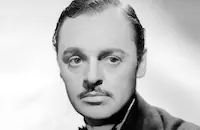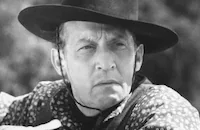The Girl from Alaska
Cast & Crew
Nick Grinde
Ray Middleton
Jean Parker
Jerome Cowan
Robert H. Barrat
Ray Mala
Film Details
Technical Specs

Synopsis
After four unprofitable years in Alaska, gold prospector Steve Bentley prepares to return to the United States. His friend Ravenhill, who is known as Rave, tries to convince him to participate in a scheme to acquire 9,000 ounces of gold. Rave explains that he followed mountie Travis as he was escorting a newcomer, Matt Donovan, to a remote location where Donovan was to help prospector "Boomer" McCoy and his son Pete take the gold out of Alaska. Travis was forced to leave the man when word came that a woman had been killed in Fort Nelson. Rave wants to follow the newcomer to McCoy's strike and steal the gold, but Steve turns him down. He then indulges in a drunken farewell party with his friends, during which he thinks he hears a wolf outside and attempts to shoot it. The next morning when he awakens, Steve is horrified to learn that Travis has been shot to death, and that the evidence indicates Steve is the culprit. Rave's cohort Frayne offers to help Steve escape, but when Rave escorts Steve to the pass, he threatens to turn him over to the mounties if he does not cooperate with his plan to steal the gold. Rave reveals that the newcomer, Donovan, died mysteriously on the trail, and that Rave has possession of the letter introducing him to the McCoys. Steve bitterly agrees to impersonate Donovan, whom the McCoys have never met, and continues north, accompanied by his faithful dog "Tolo." They are soon found by Charley and Pelly, the McCoys' workers, and Steve discovers that Pete is the nickname of Boomer's daughter Mary. Pete explains that Boomer is dead, and that she has already sent away her other workers. Anxious that the workers have spread the news about the strike, Steve begins loading the gold for the trip out. Before they can leave, however, Rave and Frayne arrive and state that the McCoy workers have stirred things up with news of the gold. Steve is forced to allow Rave and Frayne to join the party, but his growing affection for Pete makes him determined to protect her. Soon after they begin, the group encounters a stampede of prospectors heading for the McCoy mine, and Steve uses the confusion as an opportunity to send Charley and Pelly off with Pete. While Steve is fighting off Frayne, Rave brings the mounties, who arrest Frayne as Steve escapes. Steve hides in a nearby cave but is soon found by Rave, who reveals that Frayne killed the woman at Fort Nelson. Pete appears soon after and tells them that she hid the gold and came back because she cannot live without Steve. Rave then admits that Frayne killed Travis, but that he allowed Steve to believe he was the murderer in order to get his cooperation. After congratulating them on their good fortune, Rave leaves, and Steve yells after him that they will invite him to the wedding.

Director
Nick Grinde
Cast
Ray Middleton

Jean Parker

Jerome Cowan

Robert H. Barrat

Ray Mala
Francis Mcdonald

Raymond Hatton
Milton Parsons

Nestor Paiva
Ace
Frank Lackteen
Edmund Cobb
John Burger
Bert Lebaron
Art Dupuis
Dick Elmore
Jack O'shea
Johnny Kascier
Bob Jameson
Matty Roubert
George Sky Eagle
Iron Eyes Cody
Leo Abbey
George Becinita
Carlos San Garrido
Augie Gomez
Riley Sunrise
Bill Wilkerson
Crew
Robert Ormond Case
Cy Feuer
Phil Ford
Russell Kimball
Edward T. Lowe
Howard Lydecker
Jack Marta
Ernest Nims
Adele Palmer
Armand Schaefer
Murray Seldeen
Bud Thackeray

Film Details
Technical Specs

Quotes
Trivia
Notes
The working title of this film was Spoilers of the North. Robert Ormond Case's novel first appeared as a serial in The Saturday Evening Post (3 June-8 July 1939). According to Hollywood Reporter news items, the film was partially shot on location at the Mammoth Lakes area of the Sierra Nevada Mountains in California. A February 5, 1942 Hollywood Reporter news item noted that the largest stage set used to date by Republic was being built on the studio's lot to accomodate some of the exterior snow scenes.












